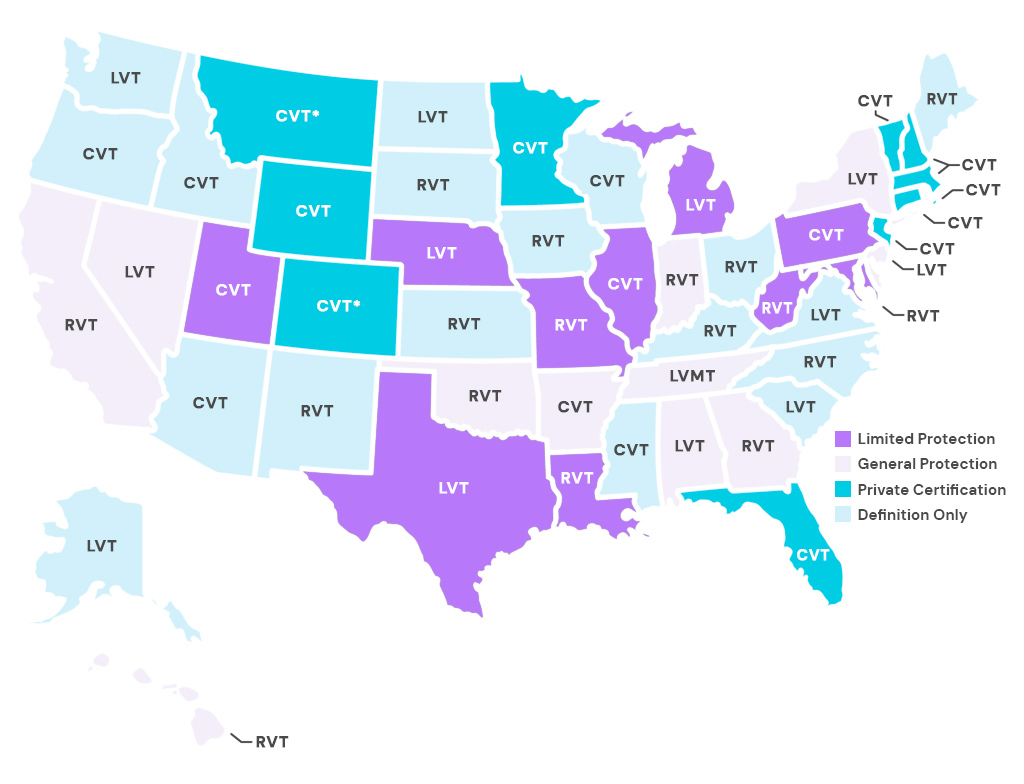Veterinary Practice Act 101:
What does it mean for vet techs?
The answer to this question can be complicated, so let’s break it down.

State-specific veterinary practice acts
Veterinary Technicians in the United States are governed by a series of state-specific practice acts that define the qualifications needed to become a Vet Tech, along with the duties and limitations of the role. Although these can vary state-by-state, a basic understanding of the Veterinary Practice Act is useful for all Vet Techs.
What’s the goal of the Veterinary Practice Act?
The goal of the Veterinary Practice Act is to protect both animals and the public by regulating the practice of veterinary medicine.
The act defines the qualifications necessary to become a licensed Veterinarian, Veterinary Technician, and other animal health professionals. It also outlines duties and limitations for those professionals.
As a Vet Tech, it’s important to be familiar with your state’s Veterinary Practice Act. This will help you understand your duties and limitations, learn about new laws that affect you, and keep up with changes that can affect your career.

How is the Veterinary Practice Act created and revised?
The Veterinary Practice Act is created and revised by several different entities: state legislators, Veterinary Medical Boards, Veterinary Medical Associations, and Veterinary Technician Associations.
Legislators put forward bills to make changes to the act as they deem necessary, while Veterinary Medical Boards put forward recommendations for revision. Finally, Veterinary Medical Associations and Veterinary Technician Associations advocate the first two groups for needed change.
Legislative sessions occur in each state where bills for change can be put forward each year. In addition, Veterinary Practice Acts go through a “Sunset Review” regularly (typically every 3-5 years) to evaluate their need and decide whether modifications are necessary.
The Veterinary Practice Act is a living document that’s regularly updated to reflect the latest advances in veterinary medicine and to ensure that all practitioners are held to a high standard.

Veterinary Practice Act
Vet Tech Credentials as of 2022
* Montana and Colorado credentialing requirements scheduled to change in 2023
Certified Veterinary Technician (CVT)
Licensed Veterinary Medical Technician (LVMT)
Licensed Veterinary Technician (LVT)
Registered Veterinary Technician (RVT)
General requirements
An Associate’s or Bachelor’s degree in Veterinary Technology or a Veterinary Nursing degree from an AVMA Accredited Program.
Passing the Veterinary Technician National Examination (VTNE) maintained by the AAVSB.
Credential granted by the state VMB, or certification granted by private organization.
Quick Facts
General scope of practice
Determining a diagnosis and prognosis, prescribing treatment, and performing surgery can only be performed by licensed veterinarians.
In states that regulate veterinary technicians, some tasks and procedures may be restricted to those with credentials (depending on the state).

Quick facts
The laws regarding general scope of practice are not yet clearly defined and vary widely from state to state.
Organizations like AAVSB put out models for states to aim for.
Tasks that are commonly restricted to ensure patient safety
Veterinary technician specialties
Due to a growing interest among Veterinary Technicians to attain a higher level of recognition for advanced knowledge and skills in specific disciplines, the National Association of Veterinary Technicians in America (NAVTA) developed the Committee on Veterinary Technician Specialties (CVTS). Very few states currently include language on Veterinary Technician specialists.
Visit NAVTA’s Specialties Page to find out more.

Quick Facts
Title protection
The Veterinary Technician profession is challenged with obtaining self-identity that provides unquestionable professional recognition that is not confused with veterinary team members that have not completed a veterinary technology/nursing curriculum, and/or passed standardization credentialing examinations.
Those who have not obtained a Veterinary Technician credential are considered Veterinary Assistants (VAs) in most states.
Protecting the identity of Veterinary Technicians to solely those that meet the educational requirements, termed “title protection” is within the NAVTA’s strategic plan. As of 2022, 21 states have title protection, while the rest have legal definitions or private certification without true title protection.
Proper title protection protects the public from misrepresentation of having attained formal education by non-credentialed individuals and upholds the reputation of the profession.
*credentialing requirements scheduled to start in 2023
Veterinary Technician
resources & assistance
Infographic created in partnership with


